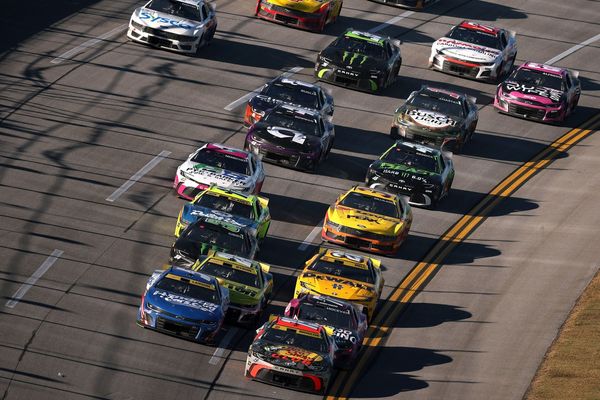
Earlier in the week, the PGA Tour announced that it was to vote on proposals following a PAC-led examination aimed at making the circuit more competitive and compelling.
The PGA Tour published a comprehensive 23-page Executive Summary following the announcement, which detailed plans to address pace of play problems.
At first glance, some of the proposals appear counterintuitive, including a reduction in the fines issued to players for breaches of the Pace of Play Policy.
For example, if the proposals are voted through on 18 November, from the 2026 season players will no longer risk fines solely as a result of Timings, Bad Times and Excessive Shot Times during the Majors.
For reference, per the existing policy, “Bad Times apply when a player exceeds the applicable time to play a stroke when being timed. The player will be given a bad time and informed by the referee as soon as practicable."
Meanwhile, “Excessive Shot Times apply when a player exceeds: a) 120 seconds for the first player in a group to play a stroke, or b) 100 seconds for subsequent players in the group to play a stroke.”
More generally, those who are fined for Bad Times will see it reduced from $50,000 to $10,000, with those guilty of Excessive Shot Times seeing the fine halved from $10,000 to $5,000.
But how would such a move speed up the pace of play? That’s something that led to speculation on social media, with popular X account Monday Q Info one of the first to query it.
HOLY SHIT. THEY ARE ADJUSTING THE PACE OF PLAY TO GIVE THE PLAYERS....MORE TIME!!!!!!!!!!!!!!!!!!!!!! AND THE FINES....LESS!!!!!!!!!😂😂😂😂😂😂😂 pic.twitter.com/VvXKAAL298October 29, 2024
Among the replies was the Golf Channel’s Brentley Romine, who suggested the added leniency could give officials more ammunition to impose penalties when the policy is breached.
He wrote: “The way I look at it is reducing the fines might make officials MORE likely to impose penalties/fines, so could be a positive thing,” before adding: “If they are telling the players, hey, we are giving you more time in these areas, and then the players still get bad times, then officials now have even more justification to start docking shots.”
the way I look at it is reducing the fines might make officials MORE likely to impose penalties/fines, so could be a positive thingOctober 29, 2024
rare for me, but if they are telling the players, hey, we are giving you more time in these areas, and then the players still get bad times, then officials now have even more justification to start docking shotsOctober 29, 2024
It’s not all good news for players in relation to fines, and the summary also stresses that the pace of play data has identified the slowest players on the Tour following the creation of the Average Stroke Time policy.
The summary states that, under the new proposals “if a player has an average stroke time of 12 seconds or more above the field average and played in all four rounds, an Excessive Average Stroke Time infraction would be received.”
Players won’t be fined for the first two infractions but the third will lead to a $5,000 fine, with further infractions set to cost $10,000. Meanwhile, for anyone reaching 10 ASTs, the final would increase from $20,000 to $50,000.
In addition to the changes in the structure of fines, under the new proposals, players would also have more time to “find a fixed reference point and pace back to their ball” while a tweak to the out of position definition would mean that “if a group is on a par-3 hole and the group in front is still on the teeing ground on the next hole they are in a good position.”
While it remains to be seen if those particular changes will have the desired effect, one proposal that would surely make a difference is the reduction in field sizes of some events.
Several times in 2024, rounds have not been able to be completed on the same day, and the findings put that down to excessive field sizes, which also impacts the pace of play.
The email points out that 28% of events in 2024 had at least one round not completed on the scheduled day due to darkness, while 16 events had rounds that cut it mightily close, being completed within five minutes of sunset.

As a result, there is a proposal to change the number of groups heading out in the morning and afternoon waves of some full-field events in the first two rounds from 13 to 12.
That’s to alleviate bottlenecks on the 10th, when the “first group on each side is delayed when making the turn because the last group on the other side has not cleared the fairway landing zone.”
It points out that reducing the number of groups from 13 to 12 will allow an extra minute between tee times.
Therefore, it proposes a maximum field size of 144 (rather than 156) for one-course full-field events. That generally reduces to 120 for those events that take place prior to daylight saving time. Full-field sizes played after daylight saving time goes into effect until The Masters would have a maximum of 132 players.
So, for example, The American Express, which is played on three courses, would retain a 156-field size, but the Farmers Insurance Open would see that number reduced to a maximum of 144 to aid pace of play.
Also, February’s WM Phoenix Open would see a reduction of 12 players to 120 to take account of daylight, while March’s Players Championship would also see a field size of 120 rather than 144, again for daylight purposes.

After The Masters, no tournament would exceed 144 players, mainly to aid pace of play. That would affect tournaments including the RBC Canadian Open and the DP World Tour co-sanctioned Genesis Scottish Open, where the field size on each would be reduced from 156 to 144.
In addition, Monday qualifiers are set to be removed completely from tournaments with 120 or fewer players, while tournaments with 132-player fields would see only two rather than four Monday qualifiers.
It is also proposed that only 20 players will receive PGA Tour cards via the Korn Ferry Tour Points List, rather than the current 30.
The points distribution structure of Signature Events is also subject to minor tweaks.







